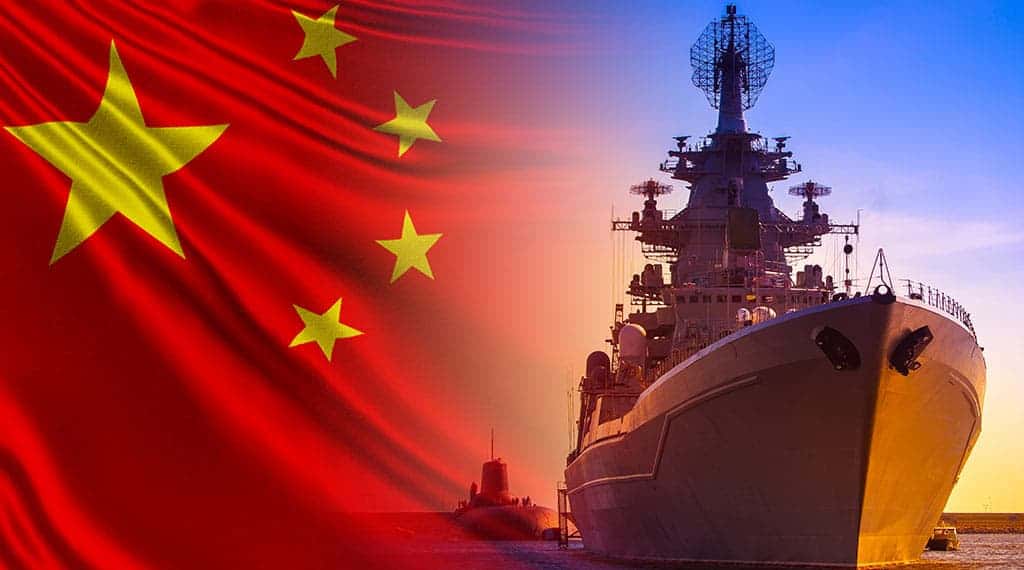Lai’s stopover will be Beijing’s excuse for Taiwan invasion rehearsal

Since Taiwanese President Lee Teng-hui’s June 1995 visit to his alma mater, Cornell University, to give the commencement address, China has reacted with coercive measures against Taiwan. Lee’s visit was used by Beijing to launch a series of ballistic missiles into the waters around the island. Beijing reaction caused the Third Taiwan Straits Crisis of 1995-1996. Unlike the previous crises of 1954-1955 and 1958, the Third Crisis demonstrated Beijing’s growing capabilities to implement a blockade or invasion of Taiwan.
Since the late-1990s, China’s military capabilities have grown spectacularly to the point where they are a formidable danger to the U.S., its allies, and to Taiwan. They are now able to support its long-standing ambitions to conquer Taiwan. Beijing employs the visits of U.S. officials to Taiwan or of Taiwanese leadership to the U.S. to both justify coercion against Taiwan and to mask invasion exercises.
The August 2022 visit of Speaker Nancy Pelosi was used to execute the first of three major exercises Chinese military doctrine calls for in an invasion of Taiwan. This was the PLA’s Joint Fire Strike Campaign (JFSC). In April of this year, coinciding with Speaker Kevin McCarthy’s visit, the People’s Liberation Army (PLA) conducted a Joint Anti-Air Raid Campaign (JAARC) rehearsal under the rubric of exercise “Joint Sword 2023.” This was the second major rehearsal for an invasion of Taiwan in the past 10 months. While the CCP commonly employs the excuse of Taiwanese officials visiting the U.S. or with leadership meeting with the U.S. Speaker of the House of Representatives as the impetus for these provocative acts, in truth this venom and calumnies regarding Taiwanese leaders are cover for the PLA conducting these invasion rehearsal exercises.
The transit of Taiwanese Vice President and Democratic Progress Party (DPP) presidential candidate and front runner Lai Ching-te through the United States should generate the third and final major dress rehearsal. Lai will arrive in New York on August 12 on his way to Paraguay for an August 15 ceremony for that country’s new president. He will return through San Francisco on August 16. Beijing claims that the stopover is a violation of its territorial integrity. It is likely that Lai’s stopover will provide cover for the final major element of the Taiwan invasion strategy to be exercised by the PLA: the “Joint Island Landing” campaign. The three exercises allow the Chinese military to test each major functional warfighting capability necessary for a successful invasion.
Once key targets on Taiwan are neutralized by the Joint Fire Strike Campaign and control of the air over Taiwan is achieved during the Joint Anti-Air Raid Campaign, the PLA Navy will then launch an amphibious invasion of the island, that will include use of many civilian Roll On-Roll Off (Ro-Ro) ferries, along with the PLA Air Force landing airborne forces to seize key airfields that will allow a vast number of Chinese civilian aircraft, that will allow China to move and sustain a massive invasion force. The Joint Island Campaign exercise will be conducted on the mainland coast in the Fujian and Guangdong provinces and will be the final rehearsal before any real invasion of the main island.
The Biden administration cannot be surprised or caught on the back foot by China’s actions as Beijing is telegraphing its capabilities to conduct an invasion. Neither can it be distracted due to the ongoing war in Ukraine or recent Chinese threats to our treaty ally in the South China Sea. All are important and require clear thinking, extensive planning and determination to deter these overt acts by Beijing.
The $345 million in military aid recently announced by the Biden administration is welcome but is far from sufficient to meet the military requirements of Taiwan and American forces in the region. As such, U.S. military aid should be broadened and deepened to provide Taiwan with the conventional deterrent capability Taiwan requires to meet all avenues of attack. This kind of commitment is substantial and will require years to construct and implement. It will require expanding the U.S. footprint on Taiwan. However, this is time Taiwan does not have as Beijing has exercised the major components of an invasion.
Only the U.S. military in conjunction with allies like Japan, Australia and the Philippines can deter an attack today. Action is needed immediately. First, the Biden administration needs to devote the attention of the U.S. national security community on the deterrence of an invasion of Taiwan. Second, ambiguity is the death knell of deterrence, and clarity its handmaiden. The greatest step the Biden administration could accomplish is to end the de facto policy of “strategic ambiguity” and instead link Taiwanese security to that of the U.S., that is, to make an extended deterrent commitment to Taiwan. That is the only measure that can ensure Taiwanese security in the immediate term.
These are significant and weighty actions that involve risk as the U.S. would be making explicit what Washington for decades has kept implicit. It is unlikely that Biden will do so given the administration’s record on China. An ersatz solution, greater military cooperation with Taiwan and Japan that includes air, naval, anti-ballistic and cruise missile exercises should be planned and executed as soon as possible. We are entering a period of maximum risk of a Chinese invasion of Taiwan. Neither Taipei nor Washington is prepared for it, yet there is still time to act—but it must be now.
- Victory over the PRC: Why engagement makes war with Beijing more likely - April 24, 2024
- The US must end engagement (and Biden’s neo-Engagement) with the PRC now - April 10, 2024
- How to address the CCP threat: Engagement, defeatism, or victory - April 3, 2024
